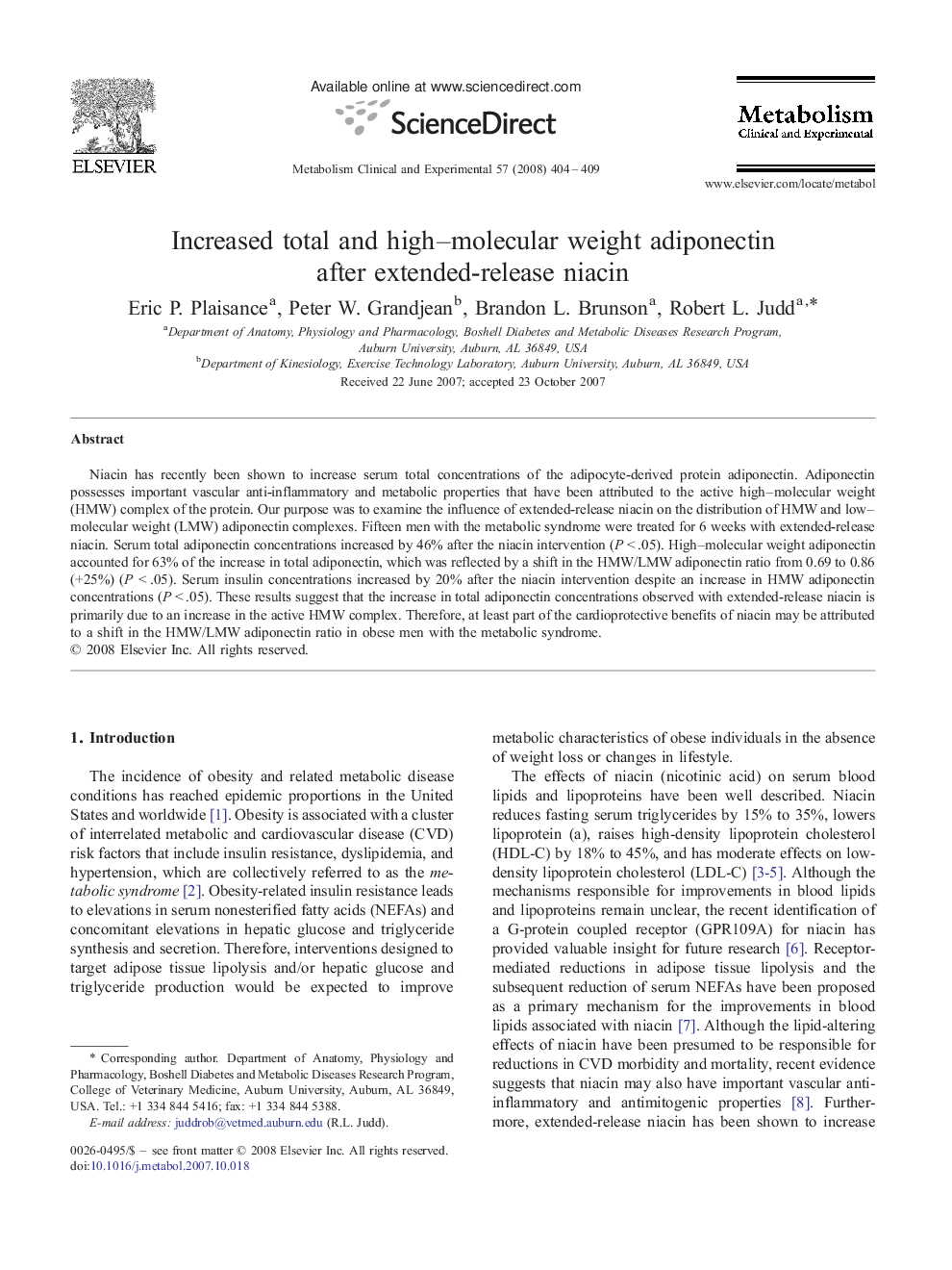| Article ID | Journal | Published Year | Pages | File Type |
|---|---|---|---|---|
| 2807232 | Metabolism | 2008 | 6 Pages |
Abstract
Niacin has recently been shown to increase serum total concentrations of the adipocyte-derived protein adiponectin. Adiponectin possesses important vascular anti-inflammatory and metabolic properties that have been attributed to the active high-molecular weight (HMW) complex of the protein. Our purpose was to examine the influence of extended-release niacin on the distribution of HMW and low-molecular weight (LMW) adiponectin complexes. Fifteen men with the metabolic syndrome were treated for 6 weeks with extended-release niacin. Serum total adiponectin concentrations increased by 46% after the niacin intervention (P < .05). High-molecular weight adiponectin accounted for 63% of the increase in total adiponectin, which was reflected by a shift in the HMW/LMW adiponectin ratio from 0.69 to 0.86 (+25%) (P < .05). Serum insulin concentrations increased by 20% after the niacin intervention despite an increase in HMW adiponectin concentrations (P < .05). These results suggest that the increase in total adiponectin concentrations observed with extended-release niacin is primarily due to an increase in the active HMW complex. Therefore, at least part of the cardioprotective benefits of niacin may be attributed to a shift in the HMW/LMW adiponectin ratio in obese men with the metabolic syndrome.
Related Topics
Life Sciences
Biochemistry, Genetics and Molecular Biology
Endocrinology
Authors
Eric P. Plaisance, Peter W. Grandjean, Brandon L. Brunson, Robert L. Judd,
